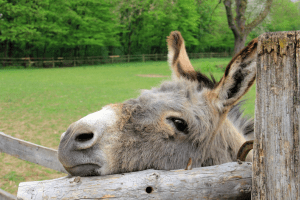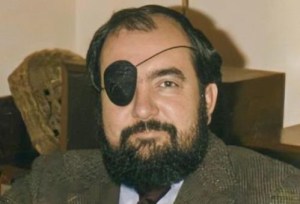We support our Publishers and Content Creators. You can view this story on their website by CLICKING HERE.
Christopher Columbus is without a doubt responsible for the Columbian Exchange—which through human agency recreated the lost world of Pangea. But was Columbus the first to discover America?
The memory—and especially the statues—of Christopher Columbus have taken quite the beating over the last half-century. The great Lakota activist, Russell Means, once called him worse than Hitler, and the various Leftist movements of present-day America seem to concur. Some Italian-Americans have defended the Renaissance-era Genoan in their local neighborhoods and communities, but groups such as the Roman Catholic Knights of Columbus and the Daughters of Isabella have remained silent. Many in our present day are claiming that “silence is violence,” and in the case of poor Christopher Columbus, this is blatantly and tangibly true. The silent watch as the mobs deface our Columbus memorials. What they might do with names such as the “District of Columbus” or “Columbus, Ohio” remains to be seen. And poor Lady Liberty. She has been known as “Columbia,” the goddess of liberty. The recent movement against Christopher Columbus seems to have rendered her into and reduced her to nothing but a two-bit whore.
As I watch these incredible outbursts of violence, I am reminded of Fisher Ames’s not-so-tactful comment in 1806:
Our disease is democracy. It is not the skin that festers—our very bones are carious, and their marrow blackens with gangrene. Which rogues shall be first, is of no moment—our republicanism must die, and I am sorry for it. But why should we care what sexton happens to be in office at our funeral? Nevertheless, though I indulge no hopes, I derive much entertainment from the squabbles in Madam Liberty’s family. After so many liberties have been taken with her, I presume she is no longer a miss and a virgin, though she may still be a goddess.
As I mentioned in the previous essay, Columbus is without a doubt responsible for the Columbian Exchange—which through human agency recreated the lost world of Pangea. The Old World got corn, potatoes, and tomatoes, and the New World got horses, pigs, and small pox.
Yet, was Columbus the first to discover America? Well, let’s leave aside the fact that at least three separate migrations of people in pre-history migrated to the Americas to become the Native American Indians. Obviously, we leave this aside merely for the sake of argument. Once, when my family visited Plymouth Rock, my oldest son looked down at the moment—a massive rock stamped 1620—and asked, “Dad, how did the Indians know that the Pilgrims would arrive in 1620”? A great question to be sure, and we too often—as Americans and as scholars—imagine the American Indians standing around, doing next to nothing, impatiently waiting for the Europeans to arrive so that their history might begin.
So, aside from this… there are actually five rivals to the claim about which non-American Indian discovered the Americas.
First, the Japanese. Archaeologists have discovered pottery off the coast of Ecuador that resembles—rather closely—ancient Japanese pottery. Perhaps ancient Japanese fisherman followed the coastlines of Japan-Siberia-Alaska-Canada-North America and arrived in Ecuador. Perhaps.
Second, the Chinese. Prior to becoming fully isolationist in the mid-1400s, the Chinese possessed a massive naval fleet under the admiralship of the astounding Cheng Ho. We know that Cheng Ho explored the Indian Ocean and the east coast of Africa, perhaps, he ventured across the Pacific as well. Sadly, this is pure conjecture. Unlike the Japanese pottery remains, there are no physical remains yet discovered that might indicate the Chinese visited the Americas.
Third, Irish monks led by the ever-intrepid St. Brendan the Navigator (who died around 577). Manuscripts exist from his era that rather nicely and seemingly describe parts of the North American coastline. Impressively, in the 1970s, Tim Severin recreated the boats of Brendan’s era and re-traced (re-sailed) the route that St. Brendan might have taken.
Fourth, the Welsh prince, Madoc. A tale told in Queen Elizabeth’s reign was that Prince Madoc (Mad Dog) not only reached North America in his explorations, but actually penetrated as deep into the continent as North and South Dakota. This, many 19th-century travelers believed, explained the existence of blue- and green-eyed Indians along the upper Missouri River. Not coincidentally, Elizabeth was an imperialist, and the idea of a Briton discovering America before Columbus played well into her own personal mythology and reign.
Finally, and the only one that actually conforms to evidence and fact: the Norse. The great Viking Leif Eirikson had created a settlement in Greenland in 986. Fourteen years later, in the year 1000, he spent a winter in the L’Anse aux Meadows in Newfoundland. From what little we know, he and the local Indians did not get along well, and the Vikings left after two or three years. Quite possibly, they explored as far south as New England, but again, it must be noted, they left little concrete evidence about their stay.
Again, though, the only one that matters—for the rest of the possibilities make for interesting speculation and fanciful tales—is Christopher Columbus, especially on his second voyage, the one that brought 1,200 men as well as hundreds of head of livestock in 1493. When Columbus, the Italian, sailed for Spain, he wanted to spread the Gospel, to discover untapped resources of wealth, especially land, and to find a route to the Orient. His goals were little different than those of the later French, Portuguese, and English who would explore North America.
If nothing else, maybe this essay will give the looters of America some new targets. Poor Columbus. Maybe next it will be statues of Mad Dog the Welsh Prince!
This essay was first published here in October 2020.
The Imaginative Conservative applies the principle of appreciation to the discussion of culture and politics—we approach dialogue with magnanimity rather than with mere civility. Will you help us remain a refreshing oasis in the increasingly contentious arena of modern discourse? Please consider donating now.
The featured image is courtesy of Pixabay.
Share This Story, Choose Your Platform!
Go to Top

 Conservative
Conservative  Search
Search Trending
Trending Current News
Current News 






